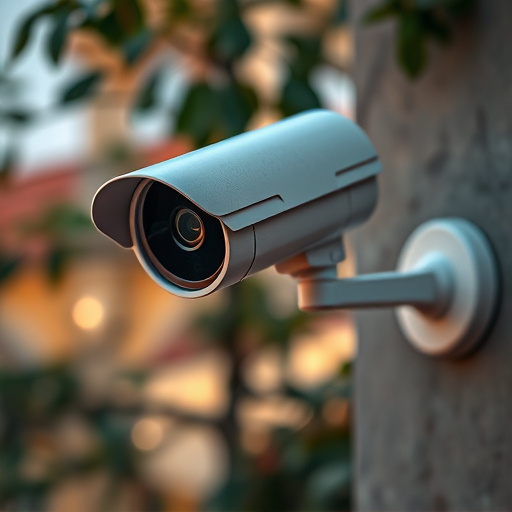Strategically place fake security cameras at varied angles and heights, avoiding predictable spots, to create an authentic surveillance simulation using the Fake Security Camera Angle Guide. Adjust camera mounts for precise positioning, select high-definition models, incorporate night vision, consider area specifics, break up patterns with obstructions, vary heights, test and adjust angles regularly for optimal coverage.
“Transform your space into a secure zone with this comprehensive guide on mock surveillance system installation. Discover the art of positioning fake security cameras strategically, covering every angle. Learn how to select the perfect mimics to suit your needs and mount them for maximum impact. From understanding camera placement to configuring for optimal visibility, this step-by-step Fake Security Camera Angle Guide ensures a realistic, effective deterrent.”
- Understanding Fake Camera Placement
- Selecting Suitable Mock Security Cameras
- Mounting and Positioning Techniques
- Configuring System for Optimal Visibility
Understanding Fake Camera Placement
When setting up a mock surveillance system, understanding fake security camera angle guide is crucial. Place dummy cameras strategically to mimic real surveillance coverage. Position them at varied angles and heights, emulating the sightlines a genuine security system would offer. This includes overhead shots, wide-angle views, and close-ups, creating an illusion of comprehensive monitoring.
Avoid predictable placements like directly in front of doors or windows. Instead, mount fake cameras on walls, ceilings, or strategic corners to create uncertainty for potential intruders. The goal is to convey a sense of all-encompassing security without exposing the system’s false nature.
Selecting Suitable Mock Security Cameras
When selecting mock security cameras, understanding your installation angle is key. Different locations will require distinct camera perspectives to mimic real surveillance effectively. For instance, in a storefront, a wide-angle lens might capture the entire shop front and entranceway, while a roof-mounted camera in an office building would offer a bird’s-eye view.
Choosing cameras with adjustable mounts allows for precise positioning. Consider high-definition models that closely resemble genuine security equipment to maintain realism. Ensure they offer night vision capabilities for all-around coverage, especially during low-light conditions. Remember, the goal is to create an authentic representation of a surveillance setup, so selecting the right camera angles and features will enhance the overall effect.
Mounting and Positioning Techniques
When mounting a mock surveillance system, understanding how to strategically position your fake security cameras is key. The goal isn’t necessarily to replicate real camera angles but to create an illusion of comprehensive coverage. Consider the area you’re monitoring—high-traffic zones may require wider field of view cameras placed at eye level or slightly elevated, while less frequented areas might benefit from hidden cameras with narrow angle lenses for close observation.
Remember, the placement should be logical and consistent. Line of sight obstructions like plants, signs, or even other decor can help break up the pattern, making the setup more convincing. Additionally, varying camera heights and orientations will add realism, as real surveillance systems often employ a mix of vertical and horizontal cameras to capture every angle. This technique creates a compelling Fake Security Camera Angle Guide, ensuring both functionality and aesthetic appeal.
Configuring System for Optimal Visibility
To achieve optimal visibility with your mock surveillance system, careful configuration is key, especially when it comes to camera angles. Just like a real security camera setup, simulating a comprehensive view requires strategic placement and adjustment. Begin by assessing the area you wish to monitor—identifying blind spots and potential hiding places. Position your fake cameras so they cover these areas, ensuring each has a clear line of sight. Consider using multiple cameras to create a network that provides all-encompassing surveillance.
When setting up the angle guide for each mock camera, think about realistic coverage. Point them slightly downward to mimic natural gaze lines, as if a human observer were watching. This approach helps capture activity at eye level, reducing the risk of missing crucial details. Regularly test and adjust these angles to ensure they remain effective over time, especially as furniture rearrangements or environmental changes might affect visibility.
Installing a mock surveillance system is an effective way to deter crime and enhance security without the cost and complexity of real cameras. By understanding camera placement, selecting high-quality fake security cameras, mastering mounting techniques, and configuring for optimal visibility, you can create a convincing and functional deterrent. This Fake Security Camera Angle Guide provides all the essential steps to ensure your system not only looks authentic but also serves its purpose in keeping your space safe.
